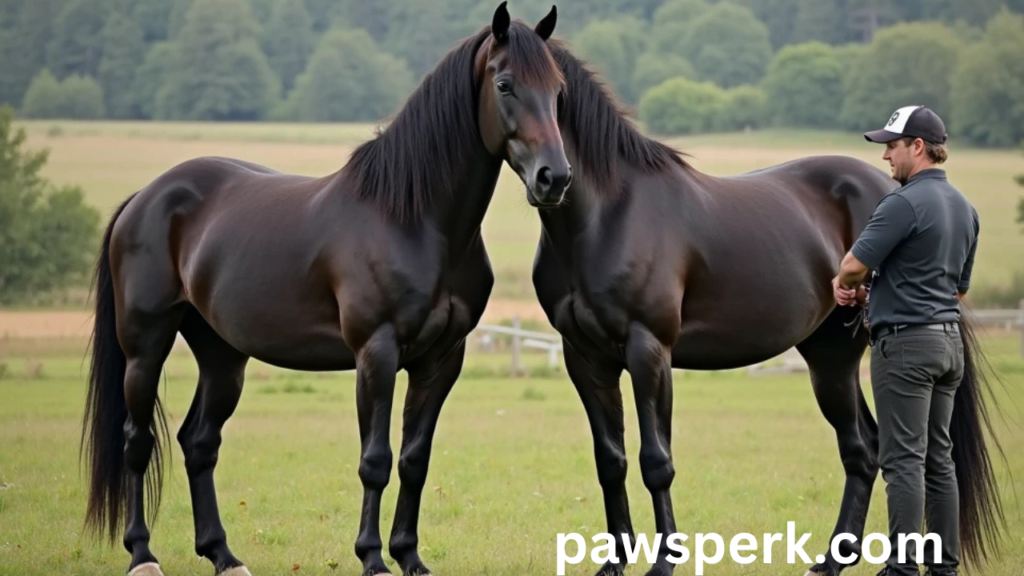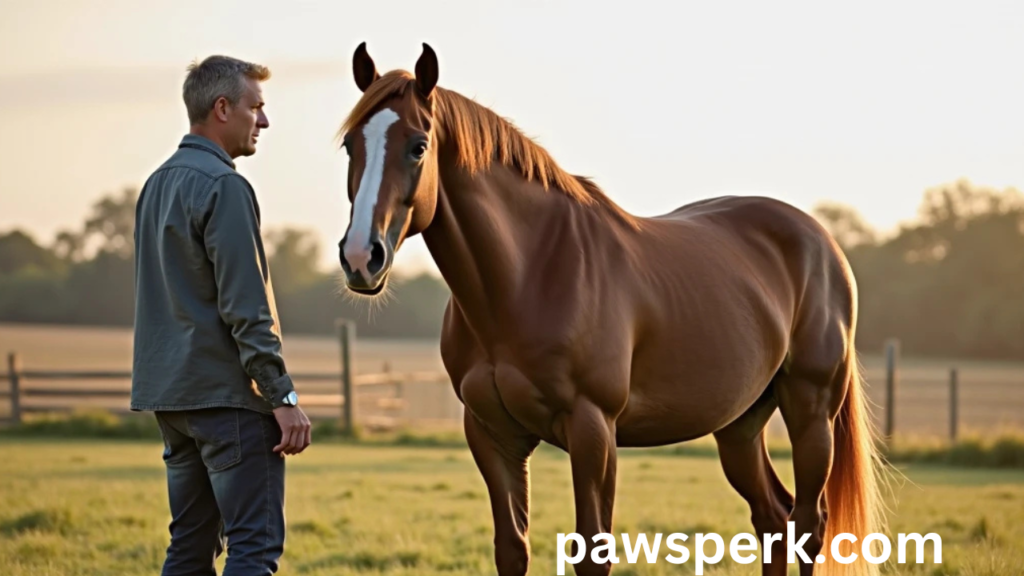Castrated male horses are often the first image that comes to mind when people think of a horse. Commonly known as geldings, castrated male horses serve as the foundation for various equestrian activities, from competitive sports to leisurely trail riding. But what does the process of gelding actually involve, and why is it such a widespread practice? In this article, we will explore the significance of castrated male horses, their role in the equestrian world, and the impact they have had on both horse care and human society.
Furthermore, what is a Gelding?
A gelding is a male horse that has had its testicles surgically removed, a process known as castration. An active male stallion becomes a more submissive, trainable friend as a result of this procedure. It is typically performed before the horse reaches sexual maturity. Despite its negative associations, “castration” is a common practice driven by practicality and concern for the welfare of the horse.
For what cause are male horses castrated?
It’s a serious decision to geld a horse. There are three main reasons why owners and trainers frequently go this route:
- Behavioral Management
Hormones that drive stallions may cause them to act aggressively or erratically. They may challenge handlers, obsess over mares (female horses), or become territorial. Geldings, on the other hand, are typically more level-headed and focused. For example, a stallion may protest training due to external distractions, but a gelding can concentrate on mastering directions or conquering challenges. - Safety and Social Compatibility
Intact males can pose risks in group settings. Their dominant battles might result in injuries to themselves or other horses. Geldings are more likely to fit in with herds and are less prone to start fights. They are therefore ideal for settings where maintaining order is essential, such as boarding stables, riding schools, and rehabilitation centers. - Population Control
Gelding prevents unintended breeding, helping curb overpopulation. With thousands of horses in rescue shelters globally, responsible ownership includes ensuring only quality genetics are perpetuated through intentional breeding programs.
The Gelding Process: Important Information for Owners
olts, or young male horses, typically undergo castration between six months and two years of age. Veterinarians recommend performing the procedure before puberty to minimize the effects of testosterone, which can lead to aggressive behavior and difficulty in handling. By castrating at an early age, owners can ensure a calmer, more trainable horse that integrates well into various environments, from riding schools to competitive arenas.
When it comes to castration, veterinarians use two primary methods: open castration and closed castration. Each technique has its benefits and potential risks, making it essential for horse owners to consult a professional to determine the safest and most effective option for their colt. Proper post-operative care also plays a crucial role in ensuring a smooth recovery, reducing the risk of complications, and promoting long-term health.
Surgical Castration: The most popular method involves making incisions while under local or general anesthesia in order to remove the testicles.
Non-Surgical Techniques: These are less common and entail injecting the horse with drugs to sterilize it.
Post-operative care is critical. Horses need clean environments to prevent infection, along with light exercise to reduce swelling. Most recover fully within two weeks.
The Benefits of Gelding Ownership
Because of their dependability and versatility, Geldings are highly valued. The following explains why riders of all skill levels choose them:
- Consistent Temperament
Geldings are less prone to mood swings when they don’t have testosterone-driven urges. Whether maneuvering a crowded show arena or toting a beginner rider on a trail, they are frequently referred to as “steady” partners. - Broader Career Opportunities
Many equestrian disciplines prefer geldings. In dressage, their focus aids in mastering complex movements. In endurance riding, their stamina and cooperative nature shine. Even Hollywood favors geldings for their predictability on chaotic film sets. - Longevity and Health
Compared to stallions, Geldings frequently lead healthier, longer lives. Their well-being is influenced by a decreased incidence of testicular cancer and less stress from territorial disputes.

Considerations and Myths Debunked
While gelding is low-risk, it’s not without debate. Advocates believe that domestication itself necessitates striking a balance between human safety and natural inclinations, while critics claim it is unnatural. The majority of veterinarians concur that the advantages—better quality of life and lower rates of euthanasia due to overpopulation outweigh the disadvantages, despite the validity of ethical concerns.
Common myths include:
- “Geldings lack spirit”: False. They retain personality and energy but direct it constructively.
- “Castration is painful long-term”: Modern techniques ensure minimal discomfort, with pain management during recovery.
Geldings in Action: Real-World Impact
Geldings contribute significantly to therapy programs beyond sports. Their calm demeanor allows individuals with disabilities to build confidence. For example, at a Colorado therapy center, a gelding named “Buddy” assists veterans with PTSD, providing silent and steadfast support during sessions.
In contrast, experienced handlers must manage stallions, which limits their roles. While mares are often gentle, their estrous cycles can make them moody. Geldings, however, offer the perfect balance, making them the “gold standard” for reliability.
Final Thoughts
Geldings showcase the strong partnership between humans and horses. By prioritizing safety, compatibility, and welfare, owners help these animals thrive in various roles. Whether you enjoy weekend trail rides, compete in equestrian sports, or benefit from equine therapy, a gelding has likely played a role in your experience.
If you’re considering buying a horse, a gelding offers an exceptional balance of versatility and loyalty. Before making a decision, consult a veterinarian to determine the best course of action for your horse’s well-being. After all, ensuring a horse’s happiness goes beyond biology—it requires creating an environment where both horses and humans can flourish together.


